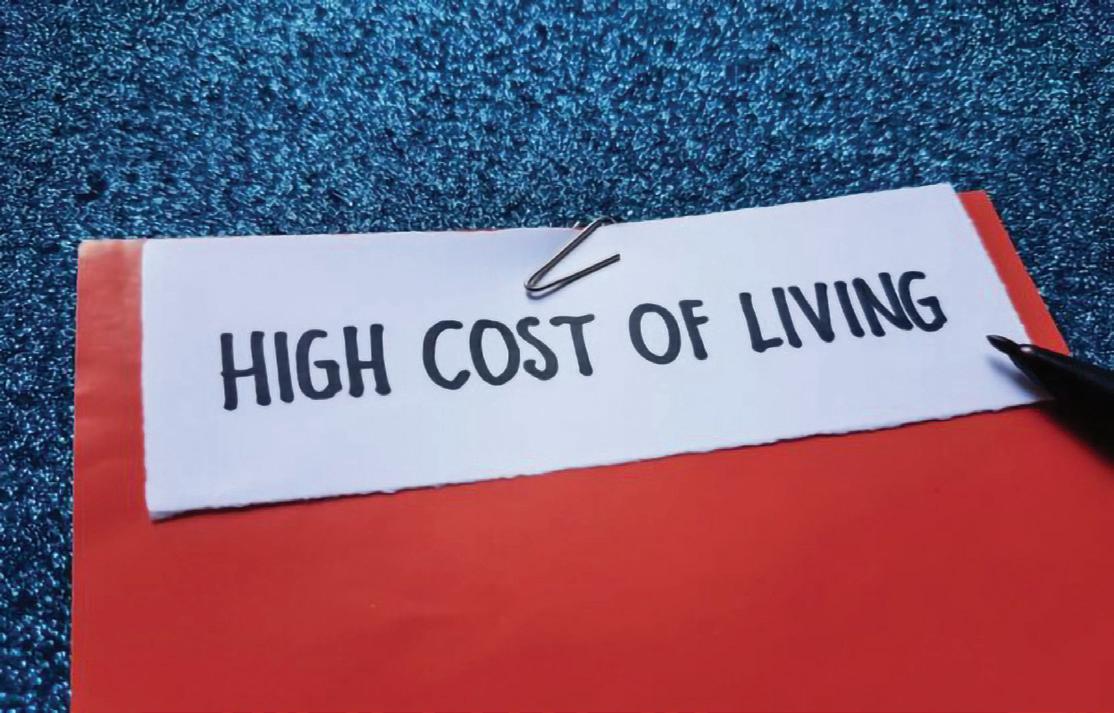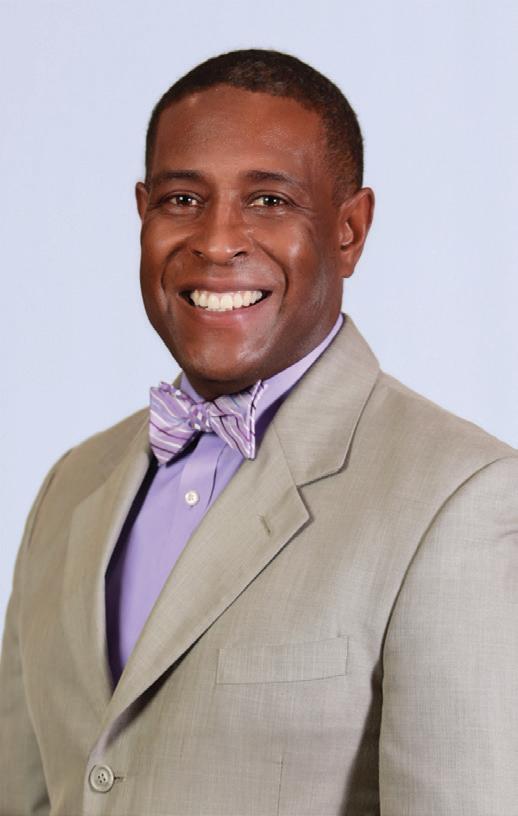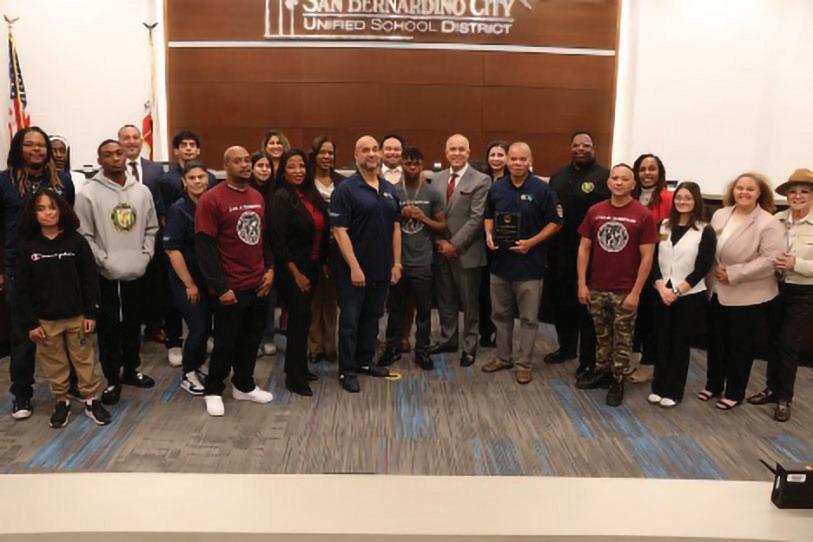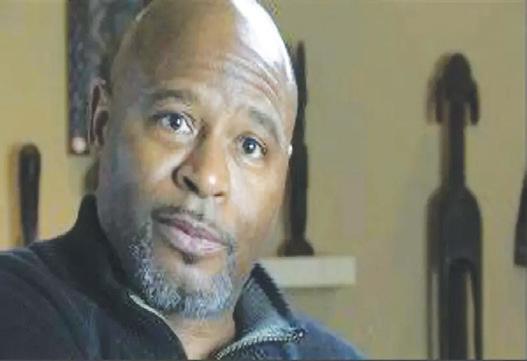

Opinion: Overregulation and Market Manipulation Are the Roots of California’s Affordability Crisis
Craig J. DeLuz, Special to California Black Media Partners
OPINION – When California Democrats recently proclaimed their intention to “Make California Affordable Again,” it echoed a familiar refrain that has been heard time and again in the annals of political promises. However, a deeper examination reveals that this pledge may be more about optics than about sincere economic reform. Even more troubling is the historical context that shows a consistent pattern of policy failures rooted in overregulation and market manipulation — a pattern that risks repeating itself.

Craig J. DeLuz
The notion of affordability in California has been stifled not by external factors but by the very policies enacted by the state’s leaders. Over the years, we have seen an alarming trend: excessive regulations that stifle job creation and create barriers to entry for housing development, driving up costs at every turn. These regulations have restricted the supply of jobs and housing.
The idea that a few tweaks can remedy the situation overlooks the entrenched nature of the problem, which is a product of policies intended to protect certain interests rather than serve the broader population.
Consider the California Environmental Quality Act (CEQA), enacted in 1970, it aimed to safeguard the environment, yet its implementation has inadvertently morphed into a formidable barrier to affordable

housing. Critics argue that it has been subverted by NIMBY factions, who wield the law as a bludgeon to obstruct new developments, particularly in affluent neighborhoods. For instance, a 495-unit housing project in San Francisco, which promised to include affordable options, languished in legal purgatory for years due to CEQA litigation and community pushback. Such protracted delays not only inflate development costs but also constrict the housing supply, exacerbating a crisis that leaves countless individuals and families priced out of the very urban centers they aspire to inhabit. The intended protections against environmental degradation have morphed into a tool of exclusion, revealing the paradox wherein efforts to protect the environment can simultaneously deepen the affordability crisis.
California’s requirement for developers of subsidized or public projects to pay “prevailing wages” serves as a prime example of well-intentioned policies leading to adverse outcomes. These wage mandates, which are frequently higher than market rates, inflate construction costs significantly — up to 40%, according to a 2020 study by the California Center for Jobs and the Economy. As a result, the very goal of creating affordable housing
becomes increasingly elusive, with developers confronted by skyrocketing expenses that necessitate additional subsidies and, in many cases, project delays. This paradox highlights a broader truth: sometimes, policies that aim to protect workers can inadvertently hinder the very access to housing that those workers need. Furthermore, financial giveaways, such as the recent proposal for housing subsidies, are not the panacea they are billed to be. While they may offer temporary relief to some, they do little to address the fundamental issues at play. Such measures have often resulted in inflationary effects that counteract any benefits. Essentially, the state rewards poor policy with more of the same, rather than confronting the underlying causes of the crisis.
Price controls also loom large in this discussion. California has flirted with the idea of implementing rent control measures that, while wellintentioned, have historically led to unintended consequences. Rather than stabilizing the market, price controls tend to deter investment in housing. Landlords, facing limitations on how much they can charge, often opt to sell, convert, or simply neglect their properties, further
shrinking the available housing stock.
The past actions of California Democrats have shown that tinkering around the edges — whether through subsidies, price controls, or draconian regulations — will not yield lasting solutions. The proposed reforms bear a striking resemblance to failed strategies of yore. For example, the $20/hr. fast food minimum wage. It was heralded as a savior for fast food workers, by guaranteeing them a “living wage”. In the end, even SEIU (one of the measures lead proponents) had to admit that the end result was lost jobs, fewer work hours and higher prices.
Until there is a genuine shift towards market-oriented solutions that empower rather than restrict, the promise to “Make California Affordable Again” will remain nothing more than a hollow slogan.
Deceptive slogans hide a reality that is too often ignored: that affordability is intrinsically tied to free market principles. Genuine affordability cannot be achieved through coercive policies; it must arise organically from an environment that encourages growth, competition, and innovation. The road ahead for California is fraught with challenges — but the initial step towards authenticity in addressing the affordability crisis is to acknowledge and rectify the mistakes of the past. Anything less will only serve to perpetuate the cycle of failure.
About the Author
Craig J. DeLuz has almost 30 years of experience in public policy and advocacy. He currently hosts a daily news and commentary show called “The RUNDOWN.” You can follow him on X at @CraigDeLuz.
California K-12 Students Encouraged to Get Artistic about Keeping
California Clean
Clean California Program Accepting Multimedia Art Contest Submissions until Mar. 24; Cash Prizes Awarded for Winning Entries
SACRAMENTO — A statewide multimedia contest led by the Clean California program is accepting entries from K-12 students through Monday, Mar. 24. The contest calls on students to create either a 30-second video or an 8.5″ x 14″ (or smaller) handmade poster to illustrate how litter impacts California communities.
"At Caltrans, we take pride in our communities we call home, and we encourage all Californians to be responsible stewards of our great state,” said Caltrans Director Tony Tavares. “We hope this contest helps students understand that it doesn't matter how old you
are, you can make a difference and help keep California clean.”
“The youngest Californians have some of the most creative solutions for big challenges, including environmental issues and sustainability,” said Barry Edwards, President of Keep California Beautiful. “This is a great opportunity for students to showcase their creativity. By addressing one of the state's most pressing issues—mitigating litter and beautifying community spaces—students can help educate others across the state on the importance of keeping California clean."
Using the Clean California initiative’s tagline “Just One Piece of Litter Can Ruin [fill in the blank],” students can submit a video or poster that depicts how even one piece of litter can ruin a picture, be it a water bottle in front of a historical building or a fast-food bag in a community garden. Students are encouraged to be creative in their entries. Students in grades 3-12 will be required to share a summary of their project (in 500 words or less), including sources used and any additional ideas for reducing litter at their school and in their community.
One winner will be selected from each of the following grade groups: K-2, 3-5, 6-8, and 9-12. Each winner will receive a $500 gift card. The K-12 Multimedia Contest is open to California students attending public, private, charter, or home schools, to express their creativity while inspiring others to keep California clean. Parental permission is required to enter. Visit CleanCA.com/Education to review the complete rules and instructions and enter for a chance to win. Learn more about projects building your community at build.ca.gov.



Osonduagwuike
San Bernardino, CA – Social Lites, Inc. is proud to announce the 58th Annual Beautillion Scholarship Program, which will take place on March 29, 2025, at 5:45 p.m. This prestigious event will showcase the dedication, leadership, and academic excellence of young men vying for the esteemed title of Sir Knight.
The theme for this year's Beautillion is "Mastering Your Destiny, Defines Your Success," with keynote speaker Dr. Akinlana Osonduagwuike. He is an educator who has mentored countless students in helping them align their priorities and pursue their dreams for a successful future. The program underscores the significance of empowering young individuals to take charge of their futures through education, community service, and personal growth.
The participants in this year's program are Joseph Goree, Jr., Brandon McIntosh, Jr. and Jaden Overstreet where one of the distinguished Knights will be achieve the title of Sir Knight. His journey exemplifies the ideals of perseverance, excellence, and commitment to achieving greatness. The Knights, will present their talents, character, and dedication to making a positive impact in their communities.
Social Lites, Inc. has been

dedicated to serving the community for over five decades, providing scholarships and mentorship to deserving young individuals. The Social Lites, Inc. is a non-profit organization committed to improving the quality of life in our community through educational programs, charitable contributions, and mentorship. The Beautillion Scholarship Program is just one of the many initiatives designed to empower youth and provide them with the resources and opportunities needed to succeed. The Beautillion Scholarship Program continues to be one of the organization’s signature events, promoting educational advancement and leadership in young men. The event will feature inspiring speeches and the ceremonial presentation of the Knights, culminating in the announcement of Sir Knight. Scholarships will also be awarded to the Knights who will have demonstrated exemplary qualities throughout the program. It will take place at San Manuel Santos Student Union Building on the beautiful campus of California State University, CA. For more information, or to RSVP, please contact Social Lites, Inc., President Sheri Lewis at (909) 320-0799.
Guest Speaker - Educator & Motivational Speaker Dr. Akinlana
Jaden Overstreet - Grand Terrace High in Grand Terrace Brandon McIntosh, Jr. - San Jacinto High School in San Jacinto
Joseph Goree, Jr. - Wilmer Amina Carter High School in Rialto
2 Thursday, March 20, 2025
Fulfilling Promises: Strengthening School Boards for a Stronger Future
By Ethan Ashley, CEO of School Board Partners

As our education system is increasingly destabilized, it is more important than ever that our local elected leaders have the knowledge, skills, resources, and capacity to fill in the gap should federal structures, guidelines and oversight go away. Across the country, there are nearly 90,000 school board members who are preparing to make decisions that will impact their communities for years to come. While national discourse is capturing so much of our attention, now more than ever, it is actually at the local level where policies are shaped in ways that directly affect our daily lives.
School boards, in particular, wield tremendous power in shaping the future by deciding what students learn, which schools they can attend, what resources are available, and how discipline policies are enforced. If we want our students to thrive, it is imperative that school boards function as high-performing, effective governing bodies.
School Board Partners’ (SBP) latest paper, Fulfilling Promises: What America’s School Boards Actually Need to Succeed identifies three core challenges
that hinder the effectiveness of school boards nationwide: a lack of representation, a lack of role clarity, and a lack of training and resources. To address these obstacles, we need to ensure school boards are more representative of the students they serve, provide clear guidance on the responsibilities of board members, and dignify the role of board members through professional development and effective governance resources.
Our organization has watched the impact of these challenges play out in school systems across the country. When board members lack lived experience or deep relationships within the communities they serve, members often struggle to understand the real implications of their policies. For example, when boards do not include members who have personally navigated biased disciplinary policies, they may not grasp the urgency to reform them. Similarly, when board members fail to recognize the importance of culturally relevant curriculum, they may overlook the need for inclusive learning materials that reflect the rich histories and
San Bernardino County Sheriff's Deputy Succumbs to Injuries Sustained in Traffic Collison While in Pursuit of a Stolen Vehicle

On Monday, March 17, 2025, at about 10:58 a.m., deputies from the Victorville Station observed a stolen vehicle near Mojave Drive and Amargosa Road, in Victorville. Deputies attempted a traffic stop but the suspect, Ryan Turner, failed to yield and a pursuit ensued. During the pursuit, Deputy
Hector Cuevas, Jr. was involved in a traffic collision with another vehicle. Cuevas succumbed to his injuries and was pronounced deceased at the scene. The female driver of the other vehicle was transported to a hospital for non-life-threatening injuries.
Turner stopped the vehicle at El Evado Road and Zuni Lane and fled on foot. Turner was subsequently caught and taken into custody.
The Sheriff’s Major Accident Investigation Team (MAIT) is conducting the investigation to determine the cause of the accident.
Anyone with information regarding this incident is urged to contact the Victorville Sheriff’s Station at 760-241-2911. Callers wishing to remain anonymous should contact We-Tip at 1-800-78-CRIME (27463) or wetip.com.
FEMA Coverage for Large Expenses
Los Angeles County wildfire survivors may be eligible for disaster assistance under FEMA’s Individuals and Households Program (IHP). FEMA disaster assistance is intended to meet the basic needs of your household for uninsured or underinsured damages directly caused by the disaster, regardless of how large.
Large expenses may include:
Structural Home Repairs
identities of their students.
But we also know what happens when boards get it right. Take the Tempe Union High School District in Arizona. Four years ago, the district was grappling with leadership tensions and unclear priorities. Three of the five board members received professional development and training focused on student outcomes from SBP. There, they were able to establish clear goals, align their budget to those goals, engage the community, and hire a superintendent who shared a similar vision. Today, Tempe Union is an A-rated district in the state, demonstrating that when boards are supported and set for success, students can excel.
The lesson is clear: school boards don’t have to operate the way they always have. We can—and must—equip board members with the tools to be effective partners in governance. This requires intentional action from multiple stakeholders:
• Communities must engage in the process of electing and supporting representative school board members. This means voting for individuals who reflect the lived experience of students and advocating for boards that truly understand the challenges and strengths of the communities they serve.
• Superintendents, district leaders, and education advocates must view themselves and school boards as essential partners in student success. This means calling for clarity in their roles, ensuring they have access to the right resources, and respecting their critical function in shaping the future of our education
system.
• State and local governments must allocate dedicated funding for school board training and professional development. We would never allow untrained individuals to run billion-dollar companies, yet we routinely place school board members in charge of massive public education systems without equipping them for the task. It is time we invest in them properly and consistently so they may deliver on their campaign promises.
At the end of the day, this goes beyond school boards—this is about the social contract that underpins our democracy. Public schools educate the vast majority of America’s children and the quality of their education will determine our country’s standing in decades to come. If we fail to set up our boards for success now, we risk failing an entire generation of students—and, by extension, our nation’s future.
The time to act is now. Let’s commit to strengthening our school boards so they can fulfill their promises to students, families, and communities. When we get this right, we can transform education and ensure a brighter future for all.
Ethan Ashley is the Co-CEO & Cofounder of School Board Partners, an organization that connects emerging, inspired elected community leaders serving on local school boards with the training, support, and mentorship needed to successfully push for high quality school systems. For additional information, visit: https:// schoolboardpartners.org.
FEMA Coverage for Large Expenses...continued or destroyed by the disaster.
Privately-owned Roads, Bridges, Docks
FEMA may provide assistance to repair fire related damage to privately-owned roads, bridges, or docks, if the only access to your home has been damaged by the disaster.
Vehicles and Transportation
FEMA may provide Other Needs Assistance to help you repair or replace a privatelyowned vehicle damaged by the disaster if you do not have another vehicle you can use.
To apply with FEMA:
Go online at DisasterAssistance.gov (fastest
option);
Use the FEMA App (available at the Apple App Store or Google Play); Call the FEMA Helpline at 800-621-3362. If you use a relay service, such as Video Relay Service (VRS), captioned telephone, or other service, give FEMA your number for that service; Visit a Disaster Recovery Center. For locations: DRC Locator
Disaster Recovery Centers are physically accessible to people with disabilities and others with access and functional needs. They are equipped with assistive technology and other resources to help ensure all applicants can access resources.
Time for Change Foundation's Newest Emergency Shelter Brings Safety and Stability to San Bernardino

dignity, rebuilding lives, and creating opportunities for lasting change,” said Vanessa Perez, Executive Director of Time for Change Foundation. “With this new shelter, we are opening more than doors; we are opening possibilities.”
Time for Change Foundation's Newest Emergency Shelter Brings Safety and Stability to San Bernardino...continued from foster care, proving that with the right support, families can heal, rebuild, and create brighter futures.
Mayor Helen Tran praised the organization’s unwavering commitment, stating, “This new shelter is more than just a house— it’s a lifeline. It represents compassion, resilience, and the unwavering commitment of this organization in our community to uplift those who need it most.”
Adding to the celebration, award-winning actress and mental health advocate Taraji P. Henson contributed to the effort by donating essential furnishings
to help transform the shelter into a warm and welcoming home for its residents. Her generosity reinforces the power of collective action in addressing homelessness and supporting vulnerable communities.
With the addition of this new shelter, TFCF continues to break barriers, offering comprehensive programs that address the root causes of homelessness, including job readiness, financial literacy, and mental health support. The organization remains unwavering in its mission to provide individuals with the tools they need to thrive.
Project Fighting Chance Named SBCUSD's Outstanding Community Partner for February 2025

SAN BERNARDINO, CA—
The San Bernardino City Unified School District (SBCUSD) is proud to have recognized Project Fighting Chance as its Outstanding Community Partner for February 2025 in honor of its unwavering commitment to the well-being and success of local students.
“Project Fighting Chance is more than a boxing gym; it’s a sanctuary for our youth, a place where they learn life skills, build character and receive the support they need to thrive,” said SBCUSD Superintendent Mauricio Arellano. “Their dedication to our students’ success both in and out of the ring exemplifies what it means to be a true community partner.”
For more than two decades,
Project Fighting Chance has provided at-risk youth with a safe space to develop confidence, discipline and resilience through mentorship and athletics.
The nonprofit organization offers after-school programs that promote physical fitness, academic support and emotional well-being, giving students a
fighting chance at a brighter future.
Through its innovative programs, Project Fighting Chance has positively impacted countless SBCUSD students, helping them navigate challenges and stay focused on their goals. One of them is Sierra High School graduate Terry Washington, better known as “Terrible” Terry Washington, who has been with Project Fighting Chance since he was 8-years-old. He went undefeated during the Olympic boxing trials in December 2023 and took home three gold medals for USA Boxing during the 2024 USA Boxing International Invitational. Project Fighting Chance’s mentorship-driven approach aligns with SBCUSD’s commitment to fostering safe and supportive learning environments for all students.
SBCUSD recognized Project Fighting Chance at the February 18 Board of Education meeting, where representatives from the organization were honored for their contributions to the community.
Wells, Furnaces, and Septic Systems
FEMA may provide Home Repair Assistance or reimbursement for the cost of a licensed technician’s professional assessment associated with the repair or replacement of wells, furnaces, and septic systems. FEMA may also reimburse for the actual cost to repair or replace your furnace, private well and septic system that was damaged
FEMA may provide Home Repair Assistance to homeowners to repair the structural parts of your home damaged by the fires. This includes windows, doors, floors, walls, ceilings, cabinets, heating, ventilation, and airconditioning system (HVAC), utilities (electrical, plumbing and gas systems), and entrance ways.
San Bernardino, CA (March 17, 2025) – Another door to stability and success has opened! Time for Change Foundation (TFCF) proudly unveiled its fourth emergency shelter, expanding its life-changing services for individuals and families in need. The grand opening, held on March 15, 2025, brought together community leaders, including Mayor Helen Tran and 7th Ward Councilwoman Dr. Treasure Ortiz, to celebrate this milestone in the fight against homelessness.
“This isn’t just about housing—it’s about restoring
The opening was particularly meaningful as it took place on Dr. Kim Carter-Tillman’s 32nd sobriety birthday—a full-circle moment for the TFCF founder, whose journey from adversity to advocacy has inspired countless others to rebuild their lives.
For over two decades, TFCF has been a driving force in transforming lives, offering more than just shelter—it provides hope, stability, and a pathway to self-sufficiency. To date, TFCF has served over 4,800 individuals and reunited 325 children with their mothers
The San Bernardino City Unified School District (SBCUSD) Board of Education, Student Board members, Superintendent Mauricio Arellano honor Project Fighting Chance as the SBCUSD Outstanding Community Partner for February 2025. (Photo by Corina Borsuk and provided courtesy of SBCUSD)
Hector Cuevas, Jr.
The Musk-Trump Alliance Threatens Black Americans
By Dr. Barbara A. Reynolds

(TriceEdneyWire.com) - As America grapples with shifting values and increasing chaos, we face an unsettling question: Could Black Americans find themselves pushed back to a time reminiscent of the 1870’s Post-Reconstruction era, where legally they had no rights whites had to respect?
The threat is real, particularly under the grip of powerful figures like Elon Musk and Donald Trump—individuals whose troubling histories and ideologies seem poised to further marginalize people of color. It is difficult to think that Musk and Trump see Black Americans as their equals worthy of sharing basic human space.
Both have been criticized for their harsh racial views and have a history of negative statements and treatment of Black people. This duo stands at the forefront of a dangerous potential that could propel Black Americans unto a societal landscape devoid of the hard-won rights and dignity they gained during the civil rights era of the 1960’s. If they succeed in spearheading initiatives aligned with their shared disdain for diversity and equity, the impact could be devastating, reminiscent of a time when Black lives were rife with white violence and systemic oppression.
Donald Trump has faced allegations of racism throughout his career. For instance, his company was sued in the 1970s for housing discrimination
against Black renters. He also promoted the debunked "birther" conspiracy which charged Barack Obama was not born in the United States.
In 1989, he placed ads in four New York newspapers calling for the death penalty for five Black men convicted of raping a white female jogger in New York’s Central Park. When the young men were exonerated, Trump never apologized. His direct comments charging that Black people come from “shithole” countries and Black Haitians immigrants should be deported while White Afrikaners should be welcomed to the U.S. as refugees continue to fuel his anti-Black sentiments.
Meanwhile, Musk’s lawsuits at his companies charging racial discrimination speak volumes. For example, Tesla has been accused of fostering a racially hostile work environment at its Fremont, California factory. Allegations include the use of racial slurs by co-workers and supervisors, as well as claims that complaints to human resources were ignored. A California judge recently allowed nearly 6,000 Black workers to proceed with a class-action lawsuit against Tesla, citing a pattern of discrimination of Black workers at its Fremont electric car factory.
Of the more than 200 Black workers who provided statements for the lawsuit, about two-thirds said they saw anti-Black graffiti including nooses, racial slurs and
Two weeks Left to Apply for FEMA
Individual Assistance and Small Business Administration Low Interest Loans
LOS ANGELES –Homeowners, renters and businesses in Los Angeles County who experienced property damage or losses from the January wildfires have two weeks left to apply for federal disaster assistance. Monday, March 31, is the last day to apply for both FEMA disaster assistance and a U.S. Small Business Administration (SBA) low-interest disaster loan. This deadline will not impact applications that have already been started.
Apply for FEMA Individual Assistance: Online at DisasterAssistance. gov. On the FEMA App. By calling the FEMA Helpline at 800-621-3362. If you use a relay service, give FEMA your number for that service. Assistance is available in multiple languages. Lines are open Sunday–Saturday, from 4 a.m.- 10 p.m. Pacific Time. At a Disaster Recovery Center (DRC). To locate a DRC near you, visit the DRC Locator. For an American Sign Language video on how to apply, visit FEMA Accessible: Three Ways to Register for FEMA
swastikas in the Fremont factory, and a quarter said higher-ups called them the n-word.
Meanwhile, several other agencies are hitting Telsa with widespread claims of worker discrimination. California’s Civil Rights Department claims in a lawsuit filed in 2022 in Alameda County Superior Court that Black workers at the Fremont factory were paid less than White workers, denied advancements, and faced daily racist abuse.
Last year, according to a CNBC report, a federal jury awarded $3.2 million to a Black former Tesla worker who sued the company in 2017 over vitriolic racial harassment and daily racist epithets at the Telsa plant. In a 2022 blog, a Telsa spokesperson said it “strongly opposes all forms of discrimination and harassment.”
Also last year, NBC reported that Musk and influencers were spreading false stories that Haitians were engaged in cannibalism while Trump & company claimed that Haitians were eating pets. The unfounded claims fueled support for deporting Haitian immigrants.
Apart from the pair’s racial handicaps, both appear to have a perspective that does not value human rights. For example, when Musk is dancing, swinging a chainsaw cutting down federal departments, is he really seeing the desperation and despair of people, many of whom are children, veterans and seniors, losing health care, homes and education aid? Or does Musk, a tech genius, merely see data, numbers and AI systems that don’t need vacations or coffee breaks as viable alternatives to his goal of downsizing workplaces.
Trump, on the other hand, also might be blinded from the human suffering by the power, voting help and billions that Musk brought him in a second run for the White House.
Looking at the Post Reconstruction of the mid 1800’s , we see a disturbing pattern of reactionary forces that drastically pushed Black Americans into an era of terror, segregation, and severe discrimination—a pattern that seems to be resurfacing today. In the aftermath of the
Civil War and Emancipation, Black males gained the right to vote, and around 1870, there were 16 Black men serving in Congress alongside hundreds more in state legislatures.
Many became property owners signaling a hopeful period of progress.
However, that optimism was short-lived; within two decades, a fierce backlash emerged that systematically ousted Black legislators from office and established a culture of White Supremacy. The ensuing Jim Crow era was marked by brutal lynchings, rampant disenfranchisement, and a systematic denial of legal rights.
From the mid-1800s to the 1960s, groups like the Ku Klux Klan thrived, resulting in the lynching of about 4,000 Black individuals, according to the Lynching Museum in Montgomery. Supreme Court decisions, such as the infamous Dred Scott ruling of 1857, affirmed the notion that Black people had no rights that white individuals were obliged to respect.
Today, the Trump-Musk duo treats Diversity, Equity, and Inclusion (DEI) not as vital components of a thriving democracy but as a "disease" to be eradicated. They are dismantling Black History programs, rolling back billions in federal initiatives that support healthcare, education, housing for people of color, and stopping the essential life-saving l aid needed in developing nations governed by Black leadership.
If this relentless assault on Black Americans goes unchecked, what safeguards do we have to prevent history from repeating itself? To save our nation and even the soul of America, we must unite to challenge the forces that seek to undermine progress, ensuring that the lessons of the past are not lost in this dangerous resurgence. The clock of history should not be ticking backwards.
Dr. Barbara Reynolds, a veteran journalist and ordained minister, is author of eight books, including co-author of "My Life, My Love, My Legacy", the autobiography of Coretta Scott King.
Two weeks Left to Apply for FEMA Individual Assistance and Small Business Administration Low Interest Loans... continued
Facebook page. California is committed to supporting residents impacted by the Los Angeles HurricaneForce Firestorm as they navigate
Disaster Assistance
Apply for SBA Low-Interest Disaster Loans:
Online at sba.gov/disaster
By calling SBA’s Customer Service Center hotline at 800659-2955. People who are deaf, hard of hearing or have a speech disability may dial 711 to access relay services. By emailing DisasterCustomerService@ sba.gov
At a Disaster Recovery Center or Business Recovery Center, where you can submit a completed application or SBA representatives can help you apply. To find a BRC near you, go to Appointment.sba.gov. Applications for disaster loans may be submitted online using the MySBA Loan Portal at https://lending.sba.gov or other locally announced locations. Follow FEMA online, on X @FEMA or @FEMAEspanol, on FEMA’s Facebook page or Espanol page and at FEMA's YouTube account. For preparedness information follow the Ready Campaign on X at @Ready.gov, on Instagram @Ready.gov or on the Ready
the recovery process. Visit CA.gov/LAFires for up-to-date information on disaster recovery programs, important deadlines, and how to apply for assistance.
LA County Launches Help for Small Businesses After Fires, Pandemic
With minority-owned Los Angeles businesses taking a double-hit of the pandemic and recent fires, the county is stepping up help
By Selen Ozturk

LA County houses approximately 1,397,434 small businesses, comprising nearly 99.96% of all businesses in the county — with more of these being women- and minority-owned than any other U.S. county.
To help these businesses recover from the COVID-19 pandemic and the January 2025 wildfires, the county Department of Economic Opportunity (DEO) has launched new programs including relief funds, legal aid, insurance navigation help, unemployment insurance extensions, a space-sharing site, and support for sidewalk vendors and home-based kitchens.
“Small businesses and entrepreneurs are the backbone of the LA County economy,” said
LA County Launches Help for Small Businesses After Fires, Pandemic...continued
webinars; a free space-sharing web portal for businesses needing storefronts or kitchens.
Pro bono legal aid including commercial lease agreements, employee safety, wages and benefits, contract negotiation, intellectual property, tax liability, entity structuring and bankruptcy is also available; get in touch online or by phone at 866-375-9511.
“In February 2024, the county also passed an ordinance creating a program, permit and workshops for sidewalk food and other vendors to come into the formal economy,” said LoBianco. “Similarly, last November, we launched MEHKO, the Microenterprise Home Kitchen Operations Ordinance, another pathway for vendors to grow their business in their own home kitchen.”
Interested vendors can operate a home kitchen that also serves as a commissary space for up to two vending carts, and can serve up to 30 home cooked meals per day, up to 90 per week, in annual sales of $100,000.
Public health webinars, permit help and funding aid — including first-year offset permit costs for 1,000 applicants through June 2026 — are available at the MEHKO website.
One beneficiary, Richard Gomeztrejo, owner of WRAPS-TOGOmeztrejo, heard of the program while sharing food with coworkers in the break room at his then-job as interior kitchen designer at a big-
work, and that certainly lends itself toward the SBDC,” he said. “We do two things — for one, provide daily training workshops across all small business topics, mostly online and some in person.”
“More importantly, we do oneon-one advising in 20 different languages to coach small businesses to start and grow,” Nye continued.
“We’re federally funded, so these are your tax dollars and actions. We help you take advantage of all the resources — fedreal, state, local — that are available to help you get capital, contracts, plans, relocate, whatever you need … including disaster recovery like insurance and FEMA loans.”
“When disaster strikes, people rarely think about the invisible or indirect impacts,” said Liana Austin, director of Discovery World Early Education Center, a south LA-based school that was] saved by free legal aid through the county.
“One is that with a reduced amount of commercial spaces due to fires or lockdowns, rents and demand increase, and businesses face pressure or displacement from lease renegotiations and hidden terms,” she explained.
DEO Director Kelly LoBianco. “They provide essential goods and services. They provide spaces for communities to convene … but in the last 60 days, there has been devastation.”
The fires wreaked up to $275 billion in damages, with nearly 1,900 small businesses within the burn zones and tens of thousands of people displaced from their homes.
To help, DEO has extended unemployment and disaster unemployment insurance through March 31, with one-on-one application help
This resource, and all those to follow, are available with more details on the DEO website; by phone at 844-777-2059; by email at deo@opportunity.lacounty.gov; and in-person at the department office at 510 S. Vermont Avenue, east LA. Other help available includes one-stop permit help; emergency cash relief grants; daily multilingual business resource events and

box store.
“At the start of the pandemic, my coworkers weren’t ordering food like they normally could. And when I was in the break room, they’d always comment: ‘What smells so good?’” he explained. “I started bringing pasta, ribs and hot wings to share. Then wraps. I’m Hispanic, so a wrap isn’t a huge leap — just an open ended burrito.”
“My tagline is: I’m not a chef, I just make wraps. It’s nothing serious,” Gomeztrejo continued. “MEHKO helped me turn my side hustle into something more. I got a food handler certificate, a permit … an inspector came to my house and approved my kitchen. It helped me build up my clientele. I say ‘Look, guys, I’m legitimate now,’ and so they’re more comfortable to place their orders and spread the word about me.”
“If you’re going to start a business, you have to have confidence, and you have to be consistent. I work as if someone’s looking over my shoulder,” he added. I’m not going to cut corners. I have a lot of fun doing this, and the legal help I got allows me to sleep well at night.”
Extensive free legal help is also available through the LA/SoCal Small Business Development Center (SBDC). Before becoming regional director of the SBDC Patrick Nye worked as a climate change researcher in the Arctic for the U.S. Coast Guard, then worked in the brewing industry in Oregon, then worked in renewable energy PR.
“It’s a very diverse resume, but a common thread is mission-related
While DSW had a long-term lease in when their building was bought in 2022, that year, the new property owners “added $100,000 to our invoice one month, claiming that we owed them additional reimbursements for water utilities going back to 2006, when they only bought the property in 2022, we’d already been paying for 18 years, their invoices didn’t add up to the amount said and the statute of limitations passed anyway,” said Austin. She had become founding director of the school to continue the now-35-year legacy of her founding mother; before this, Austin earned a
“Even
DEO legal aid “secured us with pro bono assistance with large firms to help with things like employment law compliance and reviewing documents, and smaller attorneys to help with the landlord,” Austin continued. “With a small amount of work, they helped us a tremendous amount, like going to our licensing advocate with us, because our landlord was trying to relocate us to a space that would be unsuitable.”
“Navigating the law is extremely complicated and nuanced, and there’s this power imbalance between different players in the small business realm … you’re battling a player that has a lot more power commercially than you do,” she added. “I encourage everyone to get this free help.”
Dr. Barbara Reynolds
Thursday, March 20, 2025
3 Juicing Recipes Believed to Reduce Eczema Flare Ups on Black Skin
one at a time.

This is your sign to purchase
a juicer. Yup, it’ll be one of your best investments yet. Not only is it convenient and provides healthier alternatives but if you have eczema, it just may be your new favorite piece of kitchen equipment. There is a clear link between eczema, your diet and what you consume daily. Adding juicing to your everyday life could be a complete game changer for you.
Eczema is a type of dermatitis.
It is a chronic inflammatory skin condition. Eczema is actually a quite common condition, and it isn’t contagious.
You should know that eczema can affect any individual at any age. So it’s important to know the signs and symptoms that come with the skin condition. Symptoms of eczema can flare up if an individual comes in contact with a particular irritant or an allergen.
Some irritants and allergens include:
Environmental factors like dry weather (low humidity)
Smoke and pollutants
Soaps and detergents
Certain clothing materials/fabrics
Makeup and /or skin care products
Stress/decline in your emotional wellbeing
“The Announcements Have Been Made Time to Decide─ Christ or the Mark of the Beast!”...continued
Signs and symptoms of eczema include:
Inflamed skin
Sensitive skin
Scaly rashes
Itchy skin
Dry skin
Bumps/blisters
Thick, leathery patches on the skin
Discolored (purple, brown-gray) patches on the skin for those whose skin is darker
The most common places you’ll notice symptoms on the body:
Elbows
Neck
Hands
Knees
Feet
Ankles
Face In and/or around the ears
There are treatments, like moisturizers, topical medications, oral medications and therapies available to help you manage symptoms of eczema, but there isn’t a cure for eczema.
This is where juicing comes in. What you consume makes a difference throughout your body, health and wellness. As I’ve mentioned before, there is a clear link between eczema and your diet (what you eat and drink). Juicing has many health benefits, including reducing and helping to manage eczema flare-ups.
Both allergens and irritants can cause contact dermatitis, otherwise known as eczema.
Some other benefits of juicing:
THE QUEENS!
4 Legends. 1 Stage Chaka Khan, Patti LaBelle, Gladys Knight & Stephanie Mills
Unite For Historic Tour Produced By Black Promoters Collective!

NEW YORK, March 18, 2025 / PRNewswire/ -- Music history will be made as four legendary voices come together for a breathtaking evening of vocal brilliance, electrifying energy, and mutual love. The iconic Chaka Khan, Patti LaBelle, Gladys Knight, and Stephanie Mills will unite for an unforgettable tour, "The Queens! 4 Legends. 1 Stage." celebrating decades of timeless classics and cherished memories. The Queens! 4 Legends Tour!
(PRNewsfoto/Black Promoters Collective)
The first leg of the 11-city tour kicks off Friday, May 9, in Las Vegas and concludes Sunday, June 1, in Indianapolis. Due to high demand, a second leg featuring nine additional performances will begin Friday, September 19, in Greensboro and wrap up Sunday, October 5, in Cleveland.
Tickets Presale: Thursday, March 20, at 10:00 AM (local time) via BlackPromotersCollective.com.
General On Sale: Friday, March 21, at 10:00 AM (local time).
"Sharing the stage with my amazing sisters is an absolute honor," says Chaka Khan. "Music is about connection, and this will be a celebration of the joy, power, and love that it brings to us all."
"I am so excited to join these icons, who I call sisters, on this tour! It's going to be something special. And I can't wait to see everyone there," states Patti Labelle.
"I'm thrilled to be touring with the best sisters a woman could be blessed with. We will come together in support of one another and in harmony at a time when love is most needed. Kicking it off in my hometown of Las Vegas makes it even more special," says Gladys Knight.
"I'm excited to tour with my beautiful sisters! Our different styles unite in love, compassion and understanding and it's important to come together now. Performing with Chaka, Patti, and Gladys for you will be electrifying. We can't wait to see you," states Stephanie Mills.
Produced by the Black Promoters Collective (BPC), this once-in-alifetime event unites four Grammy-
Our body quickly absorbs nutrients when we drink
Helps our body to detox harmful substances / encourages body detoxification
Boosts our energy
Helps weight loss
Natural alternative to surgery, unhealthy drinks
To get the best out of juicing for reducing eczema flare-ups, you want to use fresh fruit and vegetables that contain anti-inflammatory agents, are filled with antioxidants, and are packed with vitamins, like kale, carrots, celery, spinach, apples and berries.
So, here are three of the best juicing recipes for eczema that you should try:
juicing recipes
1. Celery juice
What you’ll need:
1 head of celery
1 green apple, peeled, quartered and cored
½-1 lemon, juiced
20g ginger, finely grated(optional)
Your how-to:
Be sure to wash everything well.
Separate the celery stalks and trim the root ends, then roughly chop each stalk. Put the chopped celery, apple, half the lemon juice and ginger in the feeder tube/through the chute,
2. Carrot juice
What you’ll need:
1 cup of carrots
1 celery stem (optional)
Your how-to:
Be sure to wash everything well.
Chop the carrots into small cubes and chop the celery stem roughly (if used). Add the carrot cubes and chopped celery to the feeder tube of your juicer and extract the juice.
juicing recipes
3. Spinach and kale juice
What you’ll need:
1 cup of baby spinach
4 medium kale leaves
1 medium granny smith apple
½ lemon, peeled
2 medium carrots
1 pinch of ginger(optional)
Your how-to:
Be sure to wash everything well.
Cut carrots, apples and lemons as needed to fit through the feeder tube/ chute of the juicer. Enjoy!
“The Announcements Have Been Made Time to Decide─ Christ or the Mark of the Beast!”
By: Lou K Coleman
winning and nominated icons who have shaped the sound of generations. Fans will experience a night of unmatched vocal mastery and show-stopping performances. A Celebration of Musical Excellence
With Chaka Khan's electrifying energy, Patti LaBelle's unmatched vocal acrobatics, Gladys Knight's soulful elegance, and Stephanie Mills' heartfelt ballads, this tour promises an unforgettable journey through the greatest moments in R&B, gospel, pop, and funk.
"To have these four legendary women together on one stage is historic," says Gary Guidry, CEO of Black Promoters Collective. "Each of them has left an indelible mark on the industry, and this tour is a celebration of their artistry, resilience, and legacy." Tour Dates & Cities
"The Queens! 4 Legends. 1 Stage." will travel to major U.S. cities. A second leg will be announced this summer:
Friday, May 9 – Las Vegas
Saturday, May 10 – Oakland
Sunday, May 11 – Los Angeles Friday, May 16 – Columbia, SC
Saturday, May 17 – Birmingham
Sunday, May 18 – Nashville
Friday, May 23 – Baltimore
Saturday, May 24 – Brooklyn
Friday, May 30 – Chicago
Saturday, May 31 – Cincinnati
Sunday, June 1 – Indianapolis A Night of Unforgettable Hits
Fans can look forward to live performances of chart-topping classics, including:
�� Chaka Khan – Ain't Nobody I'm Every Woman, Through the Fire
�� Patt i LaBell e – Lad y Marmalade, If Only You Knew, New Attitude
�� Gladys Knight – Midnight Train to Georgia, Neither One of Us, Best Thing That Ever Happened to Me
�� Stephanie Mills – Never Knew Love Like This Before, Home, I Feel Good All Over About Black Promoters Collective (BPC) Since 2022, the Black Promoters Collective (BPC) has solidified its place as a powerhouse in live entertainment. As the only wholly Black-owned live music company on the Global Pollstar Top 100 Promoters list (#39) and ranked #3 on Pollstar's Global Top Urban Promoter/Producers list, BPC continues to transform the industry. Featured multiple times on the Billboard Power Players List, BPC remains committed to providing culturally relevant, world-class live entertainment experiences. Learn more at BlackPromotersCollective.com.

For those of you who are not paying attention or have not grasped the latest announcements, you are going to be eaten alive. Do you have eyes but fail to see, and ears but fail to hear? [Mark 8:118]. Let your eyes look directly forward, and your gaze be straight before you [Proverbs 4:27] because your life depends on it. Let the wise hear and increase in learning, and the one who understands obtain guidance [Proverbs 1:5]. Stay awake at all times, praying that you may have strength to escape all these things that are going to take place and to stand before the Son of Man [Luke 21:36].
In these days of quite obvious prophetic fulfillment, the Rapture and the Seven-Year Tribulation, also known as the 70th Week of Daniel, appear to be right upon our very doorstep. The devil’s puppets are operating full force in the religious realms, the political realms, the news realms, the financial realms, the medical realms, the educational realms, the social media realms, the entertainment realms, the sports realms, the weather manipulating realms, and in what has become painfully obvious, the evil globalist realms. These mega-wealthy, evil globalist creatures openly brag about the sinister plans they have for you and for me. Consider the now-famous words of Klaus Schwab and Yuval Noah Harari. For example, “You will own nothing and like it,” and “Humans are nothing more than useless eaters that are hackable.” Those two maleficent wholeheartedly support transhumanism and the globalists’ UN Agenda 2030 to depopulate the world by about seven and one half billion people. Satan puppets are tooting their horns. They are telling us. They are showing us. They are freely announcing it on the news. They are not hiding it anymore. The announcements that are being made are clear on what’s about to happen. Pray for discernment, because if you are not grasping these announcements that are being made, you will be deceived. The veil has been pulled backed,
knowing that your ultimate reward is eternal life with Christ. Be like Shadrach, Meshach, and Abednego who refused to worship Nebuchadnezzar’s image, facing consequences but standing firm in their faith. [Daniel 3].
Be faithful unto death, and I will give you the crown of life. [Revelation 2:10].
The Lord is on my side; I will not fear. What can man do to me? [Psalms 118:6].
God promises redemption from death. Eternal life and freedom from the fear of death. [Hosea 13:14;].
Standing Firm in Faith!
and the announcements have been made. Time to Decide! Christ or the Mark of the Beast!
Think about it! Choose carefully! [Joshua 24:15]. Keep in mind, “Resistance will cost you. Submission will cost you more. For the consequences for those who resist, DO NOT receive the Mark of the Beast, who refuse to worship the image will be killed. [Revelation 13:15]. But fear not them which kill the body but are not able to kill the soul but rather fear Him which is able to destroy both soul and body in Hell [Matthew 10:28].
For those who choose Christ "have gotten the victory and will be resurrected and reign with Christ for 1,000 years. [Revelation 15:13; Revelation 20:4].
The consequences for those who submit, WHO receive the Mark of the Beast, are dire and eternal. [Revelation 14:9-11] provides a vivid and sobering description of the fate that awaits them.
A third angel followed them and said in a loud voice: “If anyone worships the beast and its image and receives its mark on their forehead or on their hand, they, too, will drink the wine of God’s fury, which has been poured full strength into the cup of his wrath. They will be tormented with burning sulfur in the presence of the holy angels and of the Lamb. And the smoke of their torment will rise for ever and ever. There will be no rest day or night for those who worship the beast and its image, or for anyone who receives the mark of its name.” [Revelation 19:15-20].
Anyone who takes the Mark of the Beast will spend eternity in Hell. Theologically, this judgment reflects the ultimate consequence of idolatry and rebellion against God. By receiving the mark, you are making a conscious choice to reject God and worship the beast. This decision is not a trivial one; it signifies a deep-seated allegiance and commitment to the forces of evil. As such, the judgment is both just and warranted. [Revelation 13:16-17].
The warning of Scripture is clear. Take the Beast Mark during the tribulation and you will be eternally condemned.
The call is to remain faithful to God, resist the allure of the beast, and endure in faith,
After this I heard what seemed to be the loud voice of a great multitude in Heaven, crying out, “Hallelujah! Salvation and glory and power belong to our God, for His judgments are true and just; for He has judged the great prostitute who corrupted the earth with her immorality and has avenged on her the blood of his servants.” Once more they cried out, “Hallelujah! The smoke from her goes up forever and ever.” And the twenty-four elders and the four living creatures fell down and worshiped God who was seated on the throne, saying, “Amen. Hallelujah!” And from the throne came a voice saying, “Praise our God, all you His servants, you who fear Him, small and great.” [Revelation 19:1-21].
The Announcements Have Been Made. Time to Decide – Christ or the Mark of the Beast!
Then I saw thrones, and seated on them were those to whom the authority to judge was committed. Also, I saw the souls of those who had been beheaded for the testimony of Jesus and for the Word of God, and those who had not worshiped the Beast or its image and had not received its mark on their foreheads or their hands. They came to life and reigned with Christ for a thousand years. [Revelation 20:4; James 1:12].
WITNESS FOR JUSTICE Issue #1247
Powers and Principalities
Dr. Sharon R. Fennema
As a movement organizer and activist, I appreciate the clarity that emerges when communities who are discerning their calling “to do justice, love mercy and walk humbly with God” (Micah 6:8, NRSVUE) take the care to distinguish between service and justice. Where service includes acts of compassion or mercy meant to alleviate suffering and intervene in moments of harm in a more immediate way, justice attempts to understand and transform the root causes of suffering and harm. Both of these callings are important and necessary parts of living fully as the Body of Christ in the world.
In my work with churches, I’ve noticed that we are often quite adept at identifying the biblical and theological mandates that undergird our calling to service. From instructions in the Hebrew Scriptures to care for the stranger to the Gospel witness of Jesus’ miracles and parables, it is easy to understand how our acts of compassionate service are part of our vocations as communities of Christ. But folks seem to find it a bit more challenging to engage theologically and scripturally with the justice work of identifying and addressing root causes injustice.
I wonder if a deeper theological understanding of powers and principalities might strengthen not only our thinking but also our practices of justice as part of our Christian vocation.
I was recently introduced to the theological work of gay activist theologian William Stringfellow (thanks to Bill Wylie-Kellerman).
Stringfellow was influenced by the student Christian movement following the Second World War, which grappled with the vastness of the evil perpetrated as the Holocaust and the unprecedented death-dealing capacity of nuclear weapons, as well as governmental repression of the Civil Rights and Black Power movements and the corruption of the Nixon era. He called for a “biblical politics” to counter the prevailing political strategy in the United States of using the Bible to justify colonial, military, economic and racial violence (An Ethic for Christians and other Aliens in a Strange Land).
In contrast, his biblical politics was rooted in a deep engagement with powers and principalities as institutions, systems, ideologies, and other political and social powers, which serve and incarnate the power of death. Stringfellow notes that our calling as Christians to praise God and live in service to love and life—that is, to “live humanly”—includes unmasking the powers and principalities.
Key to resisting and transforming the powers and principalities is understanding and revealing them, in all their specificity, as death-
dealers. I find myself especially drawn to Stringfellow’s assertion that powers and principalities like racism and white supremacy for example, are creatures. For Stringfellow, this means that principalities have “their own existence, personality, and mode of life.” I wonder what we can learn from considering the creatureliness of the principalities of racism and white supremacy.
In her novel, The City We Became, African-American science fiction author N.K. Jemisin imagines a many-tentacled white creature sending out fungal-like growths from underneath the city of New York. These white tentacles can attach themselves to people, feeding off of and nourishing their xenophobia and racism, and grow into towers and buildings in the parts of the city where there has been an erasure of culture and displacement of people due to gentrification or experiences of police or state violence. I think Jemisin gives us an idea of what it would look like to imagine the creaturehood of racism and white supremacy in a way that helps unmask it, teaching us more about how that principality pursues its death-dealing vocation.
So in this season of Lent, where we spend time in the wilderness like Jesus did, facing demonic powers and temptations, I invite us to exercise a new kind of theological imagination, one that delves into what we have to learn about justice by critiquing the powers and principalities that foster injustice. I encourage you even now to take a few moments to imagine what racism and white supremacy, as principalities that are creatures, might look like, literally. What do and might we learn from trying to engage with their creaturehood in this way? How might that assist us in pursuing our vocations as members of the Body of Christ to not only love mercy, but also to do justice? Finally, be strong in the Sovereign and in the strength of God’s power; put on the whole armor of God, so that you may be able to stand against the wiles of the devil, for our struggle is not against blood and flesh but against the rulers, against the authorities, against the cosmic powers of this present darkness, against the spiritual forces of evil in the heavenly places. (Ephesians 6:10-12, NRSVUE)
ABOUT THE AUTHOR Dr. Sharon R Fennema serves as the Join the Movement toward Racial Justice Curator for the Education for Faithful Action (EFA) Team in the National Setting of the United Church of Christ.
Lou K Coleman
Keeping it Real: The Divisive Manipulator Once Again Sets His Sights on California
by S.E. Williams

Overview: Extremist President
Donald J. Trump has launched an investigation into three California colleges, Cal State San Bernardino, the University of California Berkeley, and Cal Poly Humboldt, among dozens of colleges across 40 plus states. This investigation is seen as a move to exploit racism for political gain, and a call to action for members of the inland community to raise their voices against this issue.
When news broke on Saturday that extremist President Donald J. Trump had opened an investigation into three California colleges, many local residents were disappointed but not surprised. This action, however, struck close to home. Listed among the three colleges are California State University, San Bernardino (CSUSB), the University of California Berkeley and Cal Poly Humboldt. These three schools weren’t the only colleges to be singled out. They are among dozens of colleges–both public and private–across 40 states to be targeted. The federal Department of Education is once
again under the stewardship of Linda McMahon–you may remember her from Trump’s last administration–she’s the wrestling magnet, that should tell you something.
On Valentine’s Day, February 14, the wrestling queen issued a directive requiring all K-12 schools to eliminate DEI programs or risk the loss of federal funding. Referring to DEI programs as “repugnant racebased preferences and other forms of [racial] discrimination…”
The memo went on to proclaim, “The Department will no longer tolerate the overt and covert racial discrimination that has become widespread in this nation’s educational institutions.” Trump and his Department of Education (DOE) believe these programs discriminate against white and Asian students.
“Our ability to reach unity in diversity will be the beauty and test of our civilization.”
Mahatma Gandhi
Of course, neither is true and I certainly question when
it was that Trump became so enamoured with those of Asian descent in this country. It seems it was just a few short years ago that he was hurling non-stop racist bombs at Asians, especially those of Chinese descent and blaming them for the COVID-19 pandemic.
A 2021 study by the University of California, San Francisco found “Anti-Asian sentiment depicted in the tweets containing the term ‘Chinese Virus’ likely perpetuated racist attitudes and parallels the anti-Asian hate crimes that have occurred since,” said Dr. Yulin Hswen, an assistant professor of epidemiology at the university who led the study.
This is a clear example of the president as a Divisive Manipulator–someone who plants seeds of discord by selectively leveraging racism to his advantage. Other ways to describe Trump is as an opportunist who purposely exploits people for personal gain, and as a lying hypocrite who clearly acts in contradiction to what he often says.
Among his worst attributes, however, is that he is what can be described as a “tokenizer” who feels nothing about using his association with one group (by highlighting Asians as being harmed by DEI), to act as a shield against accusations of racism against another group (Blacks). Worst of all, he is a political schemer bumbling through the presidency with one goal in mind–expanding his own personal wealth and the wealth of those in his class–everyone else be damned.
With the administration’s
racism on full display, as evidenced by this and a multitude of other actions, each day it becomes more and more clear that Trump is purposely wrecking havoc on the country and its social contracts.
With the administration steeped in ignorance and stuck on wide-spread stupidity rather than what’s real, the DOE memo, purportedly penned by Education Secretary Linda McMahon stated, “Students must be assessed according to merit and accomplishment, not prejudged by the color of their skin. We will not yield on this commitment.”
It is obvious they are purposely misinterpreting DEI.
DEI was never intended, nor was it implemented, nor has it ever resulted in the discrimination of whites or Asians.
Such dangerous lies set the stage for conflicts between groups, another well tested, tried and true tactic of totalitarian and racist dictators, like Hitler. . . and Donald Trump.
This is another call to action for members of the inland community to raise their voices. Call the U.S. House of Representatives and Senate at (202) 224-3121 to push back on this issue. The switchboard operator will direct you. Call the U.S. Department of Education and leave a message for Linda McMahon. Let her know how strongly you stand against this investigation. The telephone number is 800-USA-LEARN (1800-872-5327). Each of us must do our part to stop the madness.
Of course this is just my opinion. I’m keeping it real.
Reviving Freedom Schools: ASALH’s fight to counter book bans and censored history
by Megan Sayles AFRO Business Writer

Back in the 1960s, the Student Nonviolent Coordinating Committee (SNCC) developed Freedom Schools to teach reading, writing, math, civics and history to African Americans whose self-determination was inhibited by the legacy of sharecropper education. The institutions’ curriculum was divided into two parts: the “Citizenship Curriculum” and “Guide to Negro History.”
The schools functioned not only as a means of delivering a quality education to disenfranchised Black communities but also as a way of preparing them to be politically-engaged citizens.
Now, in the face of attempts to restrict and censor the teaching of Black history in public schools, the Association for the Study of African American Life and History (ASALH) has reinvigorated the concept.
“In the period that I started pushing for Freedom Schools, it was very apparent that Trump’s move would be to curtail our involvement and participation in public life. It was clear that they were coming after what they referred to as ‘critical race theory’ and what I simply interpret as Black historical knowledge in general,” said Sundiata Cha-Jua, an AfricanAmerican studies professor and
member of ASALH’s executive council. “I thought the best way for us to contest that was to return to some of the ideas of Dr. Carter G. Woodson.”

Sundiata Cha-Jua is an AfricanAmerican studies professor at the University of Illinois UrbanaChampaign and a member of the executive committee for the Association for the Study of African American Life and History (ASALH). He spearheaded ASALH’s Freedom Schools initiative, which teaches Black history in local communities. (Photo courtesy of the University of Illinois UrbanaChampaign) Woodson is the founder of ASALH and the creator of Negro History Week, which later became Black History Month. Cha-Jua explained the observation was an effort to promote the mass study of Black history in social institutions that Black people controlled, like churches, associations and clubs. This ensured that history could not be erased or ignored.
In recent years, states across the country have used legislation to limit how Black history is taught in public schools. They’ve primarily taken issue with the teaching of critical race theory (CRT), an academic framework that examines how racism is embedded in the country’s policies and systems rather than solely a result of individual prejudice.
Lawmakers who oppose CRT argue it can cause division between students of different races. Cha-Jua, however, sees it as an opportunity to transform students for the better. He recalled that his first encounter with Black history was reading “Before the Mayflower: A History of Black America,” by Lerone Bennett Jr. in the ninth grade.
“It was transformative. Suddenly, you’re not just the Black kid who is ridiculed by teachers and White students. You see that Africa had vast civilizations. You find out that Black people not only contributed but produced the U.S. through their labor, inventions, statesmanship and serving in the military,” said Cha-Jua. “You find out that we have been an integral part of this society and that we have most-often sought to make this society better for everyone.”
ASALH’s pilot of Freedom Schools launched in a few Florida communities during the summer of 2023. The program has since spread to the Champaign-Urbana area in Illinois and Dallas.

Reviving Freedom Schools: ASALH’s fight to counter book bans and censored history...continued
strategies and tactics that we have used in previous eras to confront the challenges, oppression and distortions that we have encountered,” said Cha-Jua.
“We’re teaching a history that not only looks back. We’re teaching a forward-looking history in which we have useful information that helps us understand the present and chart a path to the future.”
The future of democracy rests in understanding the country’s history, according to Whitehead.
She explained that Black history can be taught anywhere, whether churches, barbershops or community centers. But, it must be taught. “We know now more than ever that the teaching of history is important,” said Whitehead. “It is a prioritization for our organization to make sure that Black is history is being centered, uplifted and taught in as many places as possible.”
Whitehead is a communications and African-American studies professor at Loyola University Maryland. She is founding executive director of Loyola’s Karson Institute for Race, Peace and Social Justice Institute and the president of the Association for the Study of African American Life and History (ASALH).
(Photo courtesy of Kasonya “Kaye” Wise Whitehead)
The organization has been intentional about placing the schools in areas where sweeping book bans have been implemented. But, it plans to expand them.
“With the Freedom Schools creating these spaces for the free-flow share of information about the Black community, we envision them being able to move across the country,” said Karsonya “Kaye” Wise Whitehead, president of ASALH.
“This is not something that should just happen in states where there is an intentional banning of books. We know that if they’re banning books in Texas, it won’t take long before it hits other states.”
Freedom Schools’ curriculum covers African civilizations; the African-American experience in slavery and during the Civil War, Reconstruction era and Harlem Renaissance; the Civil Rights Movement; Black contributions to the arts; Black politics; and race relations in America.
Cha-Jua said the Freedom Schools were designed with an emphasis on middle and high school students. Through the pilot, ASALH learned that parents, guardians and grandparents wanted to participate too.
“We’re teaching the accomplishments and the
The Heart of Early Childhood Education: Child Care Providers and Families Working Together
By Allyson D. Andrews, MSW, LLMSW, Director of Early Childhood Education, 20 Degrees
The Reality…

Running a childcare center is more than a job — it’s a labor of love. Providers pour their hearts into nurturing children, creating safe and enriching environments, and building relationships with families. But behind the joy of watching little ones grow, there’s the exhaustion of endless paperwork, financial worries, and the daily hustle to keep everything running smoothly. Many childcare providers wear multiple hats: teacher, administrator, mentor, and problem-solver. There’s never enough time in the day, especially when so much of it is spent buried in compliance reports, payroll issues, and operational challenges. For nonprofit centers, keeping up with financial leadership and board expectations can feel like an uphill battle. And the bureaucracy? It’s overwhelming. Repeating the same information across different systems steals precious time, time that should be spent with children.
On top of these operational hurdles, providers are also navigating a workforce crisis.
High turnover rates, difficulty retaining quali fi ed staff, and inadequate compensation create instability within childcare programs. Many providers struggle to offer competitive wages, leading to burnout and staff shortages that directly impact on the quality-of-care children receive. Without systemic changes and community support, the burden on providers will only grow heavier. Providers can’t do it alone and when families play a vital role in supporting their childcare community, it is better for everyone: children, families, and providers. Here’s how parents and families can partner with childcare providers:
10 Ways that Parents and Families Can Partner with Their Providers:
Show Appreciation: A simple thank-you note, small gift, or words of encouragement can go a long way in boosting morale. Childcare providers dedicate countless hours to caring for
and educating young children, often going above and beyond to create a nurturing environment. Taking the time to acknowledge their hard work, whether through a handwritten note, a kind message, or a small token of appreciation, can make them feel valued and motivate them to continue providing high-quality care.
Be Patient and Understanding: Recognize that providers are juggling many responsibilities, so trust their expertise in caring for your child. Childcare professionals manage multiple children, planning educational activities, ensuring safety, and meeting administrative requirements, all at the same time. Instead of expressing frustration when challenges arise, approach them with patience and empathy. Giving providers the benefit of the doubt and trusting their professional judgment strengthens the relationship between families and caregivers. Support Communication Efforts: Respond to messages, forms, and updates promptly to help providers stay organized. Childcare providers rely on clear communication with families to ensure the best care for children. Whether it’s filling out required forms, reading important notices, or providing updates about your child’s needs, timely responses allow providers to stay on top of operations and minimize administrative burdens. When families actively participate in communication, it creates a smoother and more supportive environment for both children and caregivers.
Advocate for Fair Wages and Funding: Join local advocacy efforts to push for better wages and resources for childcare professionals. Childcare providers are among the lowestpaid professionals, despite the critical role they play in early childhood development. Many struggle to make ends meet while providing high-quality care. Families can support them by advocating for fair wages and increased funding, whether through signing petitions, attending local meetings, or voicing their concerns to policymakers.
Volunteer Time or Skills: Offer to help with small projects like organizing supplies, reading to children, or sharing your professional skills. Many
Karsonya “Kaye” Wise
Thursday, March 20, 2025
Democratic lawmakers voice concern over the dismantling of police misconduct database
By Ashlee Banks Special to the AFRO

Democratic lawmakers express concern for Black Americans following the dismantling of the national police misconduct database.
(Credit: Unsplash/ AJ Colores)
The Trump administration has taken steps to dismantle the national police misconduct database, a tool created to track bad actors in law enforcement.
The database, known as the National Decertification Index (NDI), was designed to provide transparency and prevent officers who were decertified due to misconduct from moving between police departments without their history being known.
U.S. Rep. Glenn Ivey (DMd.-4) told the AFRO that the dismantling of the database “doesn’t make sense.”
“I’m not sure why they think that’s a good idea, because if you have a police officer who’s gotten in trouble at one police department, anybody who wants to hire that person later, especially to be another police
officer again, should have the full information,” said Ivey.
Democratic lawmakers express concern for Black Americans following the dismantling of the national police misconduct database. (Credit: Unsplash/ AJ Colores)
“To not share that information, I think, puts the public at risk, [especially] the AfricanAmerican community,” he added. The NDI was created under the Obama administration in 2015 to serve as a comprehensive record of officers who had lost their law enforcement certification due to unethical or criminal behavior. The database aimed to increase accountability and transparency within law enforcement agencies to ensure that officers with a history of misconduct would not be able to easily obtain new law
enforcement positions without their previous conduct being taken into account.
The creation of the database was driven by several highprofile incidents of misconduct, particularly cases of police brutality. The 2014 death of Michael Brown, an unarmed Black teenager, in Ferguson, Missouri, and the death of Eric Garner, also unarmed, in New York City, both raised national awareness about police practices and prompted widespread calls for police reform.
Brown’s shooting by Officer Darren Wilson in Ferguson sparked protests and led to the formation of the Black Lives Matter movement. This incident highlighted concerns over the use of excessive force by police officers, particularly against Black Americans, and contributed to the broader national conversation about police accountability.
Similarly, the death of Garner, who was placed in a chokehold by Officer Daniel Pantaleo during an arrest for allegedly selling loose cigarettes, sparked outrage and brought attention to the need for reforms in police tactics. Garner’s final words, “I can’t breathe,” became a rallying cry for advocates calling for greater scrutiny of law enforcement practices.
These and other incidents of police violence contributed to
the growing demand for systems that would track police officers with a history of misconduct and help ensure that they were held accountable for their actions.
The Trump administration’s decision to dismantle the police misconduct database has raised concerns among some reform advocates. Critics of the move argue that eliminating the database minimizes the safeguards to hold law enforcement accountable and prevent officers with a history of misconduct from continuing to serve with impunity.
U.S. Rep. Jasmine Crockett (D-Texas-30) told the AFRO President Trump “made it clear what he was going to do” when he entered office, pointing to his administration’s rollback of civil rights protections, policing reforms and diversity initiatives.
“This was a part of Project 2025, [it] was something that I thought would really matter within the Black community, as a civil rights attorney who has had to sit there with mothers and fathers who have lost their children at the hands of police misconduct,” said the Texas congresswoman.
“We are in for a rude awakening…. We are under a Jim Crow [like-era]. They are trying to erase us, minimize us, delete us and none of it is going to happen on my watch,” added Crockett
‘Quiet panic’ as national rental assistance program set to run out of cash
by Ben Christopher
A $5 billion pot of federal money set aside to help people on the verge of homelessness pay the rent is running out of cash — and no one has a plan to keep the roughly 60,000 renters, more than 15,000 of them in California — from losing their housing after the last dollar is spent.
News of the imminent expiration of the Emergency Housing Voucher program came in a March 6 letter the U.S. Department of Housing and Urban Development sent to local public housing authorities, the agencies that administer federal rental housing assistance programs.
A final payment this spring may allow some agencies to keep their emergency programs running into 2026, the letter reads. But housing authorities were advised to move forward with “the expectation that no additional funding from HUD will be forthcoming.”
For the housing authority staff who received the letter, it remains unclear whether the program is winding down simply because it has run out of funds on its own accord or whether it represents a policy shift from the Trump administration, which has been on an aggressive and often uncoordinated cost cutting tear across the federal bureaucracy.
The letter came as a shock to Lisa Jones, CEO of the San Diego Housing Commission. Jones said the commission could conceivably pay its share of the rent for the nearly 400 San Diego renters currently assisted by the program through December. After that, she could think of no obvious way to make up for the missing federal dollars.
Jones spoke to CalMatters from Washington D.C., where the heads of housing authorities across the country had gathered for a conference and to lobby their representatives. As news of the end of the program has spread among her counterparts, “a quiet panic” has set in, she said.
Absent federal money, “we don’t have the funding to solve that problem,” she said.
The program was modeled after
the much larger and well-known Housing Choice Voucher program. Also known as “Section 8,” that long-standing program pays at least 70% of the rent for anyone earning under a certain income and lucky enough to secure one of its scarce vouchers. The Emergency Housing Voucher program is more narrowly targeted at those in most dire need: people currently living on the street or in shelters, those just on the verge of homelessness and anyone fleeing domestic violence or human trafficking.
“This could very well lead to thousands of additional people becoming homeless in California.”
Alex Visotzky, senior policy fellow, the National Alliance to End Homelessness
“It’s a group of people who, but for the voucher, would be at extreme risk of falling back into homelessness,” said Mari Castaldi, who focuses on state housing policy for the Center for Budget and Policy Priorities, a progressive think tank.
The termination of the emergency programs comes at an inauspicious time for federal rental assistance programs across the country.
For decades, the federal government has offered Housing Choice Vouchers to fewer than 1-in-4 Americans who qualify for those benefits. In California’s large metro areas, voucher waiting lists — the time between when someone applies and actually receives one — regularly tops out at more than a decade.
That means few housing authorities will have many extra housing vouchers to offer anyone booted from the emergency program. Absent another solution, that would put housing authorities in the virtually unprecedented position of having to revoke assistance from people who are currently depending upon it to pay the rent.
“There’s just no plan in place to determine what would happen” in that case, said Alex Visotzky with the National Alliance to End Homelessness. “This could very well lead to thousands of additional
people becoming homeless in California.”
Why the funds ran out
The emergency program was never meant to be permanent.
Creating one of many COVID-19era additions to the nation’s social safety net, Congress funded the emergency vouchers in 2021 with a lump sum of $5 billion. Once those funds were spent, the program was meant to come to an end.
The wind-down was supposed to be gradual.
After the program’s roll out, housing authorities were told to stop reissuing the emergency vouchers as renters exited the program — because they no longer needed the help, moved to a different city or died. That way, the program was meant to phase itself out of existence. The federal housing department was given until 2030 to spend all $5 billion.
That led many local officials and housing advocates to assume the program would be funded through the end of the decade.
The wind-down of the emergency program is just the latest shudder in an unprecedented upheaval in federal housing policy enacted by President Donald Trump. The administration is considering mass layoffs at the federal housing department, raising concerns among some housing policy experts about whether they can seamlessly operate federal programs, including Section 8. After temporary freezes on all categories of federal funding in late January, the administration, led by DOGE, its “Department of Government Efficiency,” has more quietly extinguished select federal housing programs. Earlier this month the City of Los Angeles stopped accepting new applications for its general Housing Choice Voucher program, citing uncertain support from Washington.
The federal housing department did not respond to repeated emails and voice messages requesting an interview about why the funds ran out sooner than many expected, and whether the news in the March
‘Quiet panic’ as national rental assistance program set to run out of cash...continued
incomes than regular voucher holders, the average emergency voucher is about $2,200, she said.
“The gap between the rental market and the lowest incomes in our community is widening,” she said.
What happens when the money runs out
Without fresh funding, there’s no way many housing authorities would be able to transfer emergency voucher holders onto the regular voucher program.
In Santa Barbara County, for example, nearly 1-in-10 of the local housing authority’s vouchers have been shelved, kept out of the hands of qualified renters because the authority can’t afford to provide the assistance.
So once the emergency funding runs out “we have no way of helping those people right now,” said housing authority director Bob Havlicek. “Even if we did have extra vouchers available, then its public policy issue of ‘why are you helping these folks if you have people on your waitlist?’ We can’t win either way.”
There isn’t much optimism from advocates that the state will step up once the emergency funds run dry.
Bond funds that the state has used to prop up much of its affordable housing spending are running low, Gov. Gavin Newsom’s proposed budget for
the coming fiscal year includes little extra and rental subsidies, a costly and ongoing expense, have historically been a federal responsibility anyway.
That leaves the federal government, which does not appear to be in a big spending mood when it comes to social programs.
“The gap between the rental market and the lowest incomes in our community is widening.”
Lisa Jones, CEO, San Diego Housing COmmission On Monday, Trump signed a budget bill to continue funding the federal government at levels set last year. That may provide a steady funding source for the overall federal housing voucher program, though the bill may give his administration flexibility to redirect some of those funds if it chooses to. It does nothing to address the fate of the Emergency Housing Voucher program.
“We should figure out a way to save this program and make sure these people continue to receive federal rental assistance,” said Tushar Gurjal, a policy analyst at the National Association of Housing and Redevelopment Officials, an advocacy group for affordable housing providers.
“None of these folks did anything wrong. They’re just using their vouchers and following all the rules.”
Deadline To Submit Press Releases & Legals Is Mondays By 5pm
Black PressThe Heart of Early Childhood
Education: Child Care Providers and Families Working Together...continued from page 6
6 letter represented a change in federal policy.
“To me it just doesn’t sound right, that we’re so far off the mark — four years off the mark,” said Emilio Salas, executive director of the Los Angeles County Development Authority, which oversees federal housing voucher programs for 66 cities and all unincorporated communities across the L.A. basin.
Sonya Acosta, a policy analyst with the Center for Budget and Policy Priorities, said she hasn’t seen any evidence that the end of the Emergency Housing Voucher program is the handiwork of DOGE. Instead, she pointed to a familiar problem as the more likely culprit: sky-high rents.
Since Congress authorized the new vouchers in early 2021, rents across the country experienced a post-pandemic boom. That’s even true at the bottom half of the rental market, which the federal housing department uses to set its rental support levels. Between 2021 and 2025, for example, “fair market rents” in San Diego’s Barrio Logan neighborhood increased by 43%, nearly double the overall rate of inflation during the same period, according to the department.
Because the housing voucher programs pay the difference between a tenant’s income and rent, soaring rents and stagnant incomes mean the government pays more.
“We’ve seen those really big increases in rent that has also meant that some of the spending might have gone a little bit faster than initial HUD estimates,” said Acosta.
That basic math problem has put the screws to the overall Section 8 program too. Jones, in San Diego, said the Housing Commission’s average perhousehold rental assistance payment at the beginning of the pandemic was around $870 each month. Now it’s roughly $1,400. Because the emergency voucher program allows for more generous payments and because its voucher holders tend to have even lower
childcare providers operate with limited staff and resources, making extra hands invaluable. Parents can assist by helping organize classrooms, preparing materials, or volunteering during special events. If a parent has a specific skill — such as graphic design, accounting, or event planning, offering those services pro bono can significantly ease the administrative burden.
Respect Policies and Procedures: Following health, safety, and payment policies allow providers to maintain quality care. Policies are designed to ensure the safety and well-being of all children. Arriving on time for pick-up and drop-off, adhering to illness policies, and making timely tuition payments contribute to the smooth operation of a center.
Respecting these guidelines means providers can focus on creating a positive learning environment instead of resolving avoidable conflicts.
Recommend the Center to Others: Positive word-of-mouth referrals help providers grow and sustain their business. Families play a crucial role in supporting centers to maintain enrollment and financial stability. Sharing positive experiences on social media, leaving online reviews, and recommending the center to friends or colleagues can help providers attract new families, ensuring long-term success.
Contribute to Wish Lists or Fundraisers: Donating supplies or participating in fundraisers helps ease financial strain. Many childcare providers operate on tight budgets, and even small contributions — such as donating books, art supplies, or cleaning materials — can make a significant impact. Families can also organize fundraising initiatives, such as silent auctions or community donation drives, to aid providers in acquiring necessary resources that enhance the learning environment.
Stay Engaged in Your Child’s
Experience: Build a partnership with providers by asking questions, sharing feedback, and showing interest in your child’s daily activities. Engaged families lead to a stronger learning environment. Ask your child about their day, communicate regularly with teachers, and attend events when possible. This involvement reinforces the importance of early education and shows providers that their work is valued.
Celebrate Their Hard Work: Recognize the dedication and passion that goes into creating a nurturing environment for children. Recognizing and celebrating childcare providers’ dedication fosters a culture of appreciation and respect. Consider organizing appreciation events, writing positive testimonials, or highlighting their efforts in community newsletters. A little recognition can go a long way in sustaining their motivation and reminding them that their work is valued by the families they serve. By working together, families and providers can create thriving childcare communities where both children and those who care for them are supported and valued.
Allyson D. Andrews leads a team at 20 Degrees working to support child care, which offers shared services and back-office programs to ensure its providercentric approach delivers new business solutions for childcare leaders so educators, families, and, most importantly, children, all benefit. With over 12 years of experience in Early Childhood Education, Allyson founded and operated four childcare centers in the Detroit area, serving hundreds of children. Allyson has deep consulting experience in start-up operations, business development, finance, and operations for non-profit and for-pro fi t sectors with a specialization in education.
Thursday, March 20, 2025
Trump Sends Chilling Message to Immigrants Declaring English Official Language
By Sunita Sohrabji
"The message being sent to immigrant communities is that we don't belong, and that we should have no expectation of getting assistance from the Government." - Marita Etcubanez, AAAJ/AAJC

President Donald Trump has declared English the official language of the US, raising concerns about the accessibility of essential government services for non-English speakers.
“Immigrant communities are already under attack,” said Marita Etcubanez, director of Strategic Initiatives at Asian Americans Advancing Justice|AAJC. “This executive order is doubling down on the message that we don’t belong here, and that we are not Americans,” she said in an interview with Ethnic Media Services. “But we are also taxpayers. These are programs and services we have contributed to, and to which we are entitled.”
executive order, and how it might impact language access. Here are excerpts:
Marita, do you envision federal agencies looking at this executive order and saying: ‘Well, we don’t have to provide language access, so we’re not going to?’




“In welcoming new Americans, a policy of encouraging the learning and adoption of our national language will make the United States a shared home and empower new citizens to achieve the American dream.
Speaking English not only opens doors economically, but it helps newcomers engage in their communities, participate in national traditions, and give back to our society,” wrote Trump in the Executive Order.
The new policy rescinds a previous executive order by the Clinton Administration, which mandated federal agencies to make their services available to people with limited English proficiency. Trump’s executive order leaves it to the discretion of federal agencies as to whether they will adopt “English only” policies.
In an interview with EMS, Etcubanez explained Trump’s
In an executive order signed March 1 — Designating English as the Official Language of The United States — Trump stated that English has been the language of the US since its founding. “A nationally designated language is at the core of a unified and cohesive society. The United States is strengthened by a citizenry that can freely exchange ideas in one shared language.”

ME: We are going to be advocating with key agencies that they maintain their language access practices. But we also know that it is the Justice Department that has been the lead on language access. Now that the guidance on the Clinton Era executive order is rescinded, it is up to the Justice Department to promulgate new guidance. They’re going to continue to set the tone here, and I am concerned about what that is going to look like moving forward.
36 States have English as their sole language. But do you see more states taking this up given the messaging from the top down?
The message this executive order sends is deeply harmful. I am concerned that state and local governments will follow the lead as outlined in this executive order.
Do you envision a drop-off in voting, given that there might not be in-language ballots or support materials?




































Section 203 of the Voting Rights Act mandates that jurisdictions in which the language communities meet a certain numerical threshold will still be required to provide multilingual voting materials in the covered languages. That doesn’t go away because there’s a new executive order. That is something we are going to have to monitor and fight for. Now that said, not all jurisdictions are covered, and certainly not all languages that we need are included. So in terms of the areas where they are not required by law, but still have been providing translated voting materials and additional language support at the polls, we are concerned that there might be some pullback there.

What message is Trump sending out to immigrant communities?
The message being sent to immigrant communities is that we don’t belong, and that we should have no expectation of getting assistance from the Government, whether that is the services themselves or language support to access those services. And that poses really deep harm to our communities. We don’t want people to be discouraged from accessing necessary services, which I fear is one of the main messages intended by this executive order.

























































































































































































